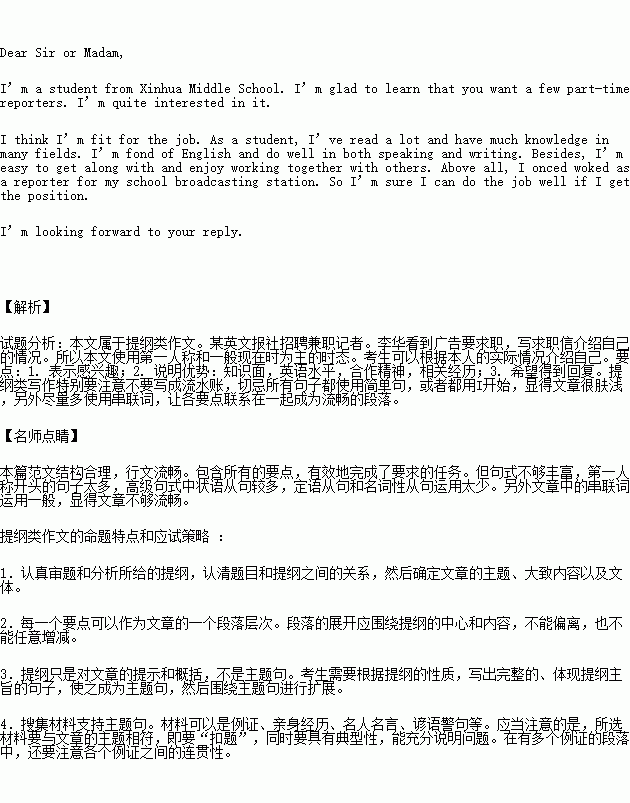题目内容
假如你是新华中学的学生李华,得知某英文报社招聘兼职记者,你有意应聘,请按下列要求给报社写一封自荐信。
内容要点:
1. 表示感兴趣
2. 说明优势:知识面,英语水平,合作精神,相关经历
3. 希望得到回复
注意:1. 词数: 100左右
2. 可适当增加细节,以使行文连贯
Dear Sir or Madam,
_______________________________________________________________________________
_______________________________________________________________________________
_______________________________________________________________________________
________
Yours,
Li Hua
练习册系列答案
 阅读快车系列答案
阅读快车系列答案
相关题目

